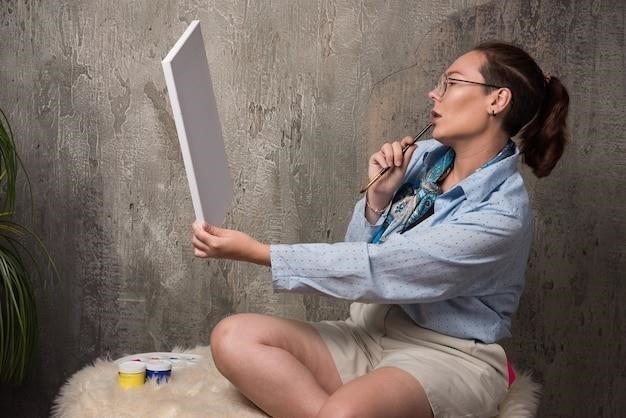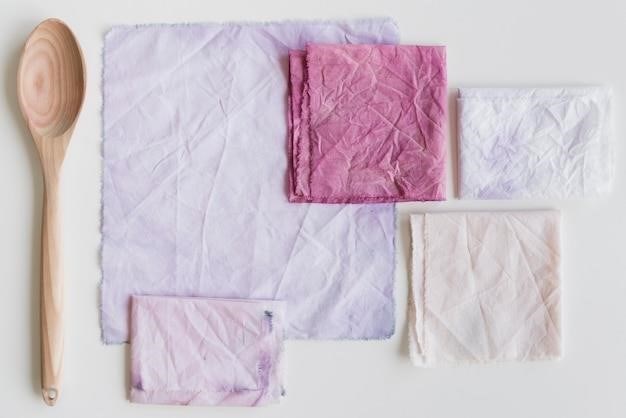This tutorial provides a comprehensive overview of diffusion models for imaging and vision, focusing on the core concepts and mathematical foundations behind these models, such as Variational Autoencoders (VAEs),…
Introduction to Diffusion Models
Diffusion models are a type of algorithm used to generate realistic images by gradually transforming random noise. They work by slowly modifying the noise until it becomes an image that closely resembles the desired output. These models have become popular because they can produce high-quality images and are relatively easy to train. Diffusion models are particularly well-suited for generating images with complex structures and textures, making them ideal for applications such as image editing, image synthesis, and image-to-image translation. They have also been used to create high-resolution images from low-resolution inputs, a process known as super-resolution.
The Rise of Diffusion Models
The astonishing growth of generative tools in recent years has empowered many exciting applications in text-to-image generation and text-to-video generation. The underlying principle behind these generative tools is the concept of diffusion, a particular sampling mechanism that has overcome some shortcomings that were deemed difficult in the previous approaches. Diffusion models have emerged as a significant advancement in generative modeling, offering a powerful and flexible approach to image generation and manipulation. They have surpassed previous methods in terms of image quality and controllability, making them a popular choice for various applications in computer vision and beyond.
Applications of Diffusion Models in Imaging and Vision
Although diffusion models are relatively new, they have already found many successful applications. For instance, they have been used in computer vision for image editing, controllable, semantic, and text-driven image synthesis, image-to-image translation, superresolution, image segmentation, as well as 3D shape generation and completion. These applications highlight the versatility and power of diffusion models in addressing various challenges in imaging and vision. The ability of diffusion models to generate realistic and diverse images has opened up exciting possibilities in various fields, from creative design to scientific research.
Image Editing
Diffusion models have proven to be remarkably effective in image editing tasks, enabling users to manipulate and enhance images with impressive results. They can be used to remove unwanted objects, change the style of an image, or even create photorealistic composites. The ability of these models to seamlessly blend different elements and textures makes them ideal for creating natural-looking edits. For example, diffusion models can be used to remove wrinkles from a portrait without altering the underlying structure of the face, or to seamlessly insert a person into a different background while maintaining realistic lighting and shadows. This capability has made diffusion models a valuable tool for photographers, graphic designers, and other professionals who need to manipulate images for creative or practical purposes.
Image Synthesis
Diffusion models excel in generating entirely new images from scratch, a process known as image synthesis. This capability has revolutionized the field of computer vision, allowing researchers and artists to create highly realistic and creative visuals. By starting with random noise and gradually transforming it into an image through a series of denoising steps, these models can produce diverse and intricate outputs. The generated images can range from photorealistic landscapes to abstract art, showcasing the versatility of diffusion models in capturing different styles and aesthetics. Furthermore, these models can be guided by text prompts, allowing users to specify the desired content and style of the generated image. This opens up exciting possibilities for creative expression and artistic exploration, as users can now generate unique and visually appealing images based on their imaginations.
Image-to-Image Translation
Diffusion models have shown remarkable success in image-to-image translation, where the goal is to transform an input image into a different representation while preserving its semantic content. This capability allows for various applications, such as style transfer, where an image can be transformed to resemble a different artistic style, or object transfiguration, where an object in an image can be converted into a different type of object. By leveraging the denoising capabilities of diffusion models, researchers can effectively transfer the style or content of one image onto another while preserving the overall structure and details. This ability to manipulate images while preserving semantic meaning has opened up new avenues for image editing and creative expression, enabling users to explore different visual representations and explore the boundaries of artistic manipulation.
Superresolution
Superresolution, the task of enhancing the resolution of an image, has also benefited significantly from the application of diffusion models. By leveraging the ability of diffusion models to generate realistic and detailed images, researchers have developed methods that can effectively upsample low-resolution images, producing high-resolution outputs with remarkable fidelity. This is achieved by training diffusion models on a dataset of low-resolution and corresponding high-resolution image pairs. The model learns to reverse the degradation process, effectively filling in missing information and generating high-frequency details that were lost in the low-resolution input. Diffusion models have demonstrated a significant improvement in superresolution tasks compared to traditional methods, allowing for the creation of highly detailed and visually appealing images from low-resolution sources.
Image Segmentation
Image segmentation, the process of partitioning an image into meaningful regions, is another area where diffusion models have shown promise. Traditional segmentation methods often rely on handcrafted features or complex optimization algorithms, which can be computationally expensive and prone to errors. Diffusion models offer a novel approach to segmentation, allowing for the generation of high-quality segmentations with less reliance on hand-engineered features. They achieve this by learning the underlying distribution of segmented images, effectively capturing the complex relationships between pixels and their corresponding segment labels. This enables them to generate accurate and detailed segmentations, even in challenging scenarios with complex objects or noisy images. Diffusion models have the potential to revolutionize image segmentation, offering a powerful tool for applications in medical imaging, autonomous driving, and computer vision.
3D Shape Generation and Completion
Diffusion models have also emerged as a powerful tool for 3D shape generation and completion. Traditional methods for 3D shape modeling often struggle with generating realistic and detailed shapes, particularly when dealing with incomplete or noisy input data. Diffusion models, however, can learn the underlying distribution of 3D shapes, enabling them to generate high-quality, complete 3D models from partial or noisy input. This capability is particularly valuable in applications such as 3D reconstruction, where it can be used to infer the complete shape of an object from a limited number of views. Additionally, diffusion models can be used to complete incomplete 3D shapes, effectively filling in missing details and creating realistic and detailed 3D models; This opens up new possibilities in fields like virtual reality, computer graphics, and robotics, where the ability to generate and manipulate 3D shapes is crucial.
Core Concepts of Diffusion Models
At the heart of diffusion models lie two fundamental processes⁚ the forward diffusion process and the reverse diffusion process. The forward diffusion process gradually adds noise to an input image, transforming it into a noisy version that resembles pure random noise. Conversely, the reverse diffusion process takes this noisy image as input and gradually removes the noise, progressively reconstructing the original image. This process is analogous to slowly erasing a drawing by gradually adding noise until only random noise remains and then attempting to recover the original drawing by gradually reversing this process. By learning to reverse the diffusion process, diffusion models can generate new images that resemble the distribution of images they were trained on. This ability to learn and reverse the diffusion process is what makes diffusion models so powerful for image generation;

Forward Diffusion Process
The forward diffusion process is the first step in the diffusion model framework. It involves gradually adding Gaussian noise to an input image over a series of time steps, transforming it into a noisy version. This process can be visualized as gradually blurring the image until it becomes indistinguishable from random noise. The key idea is to gradually corrupt the image with noise, effectively blurring the original features and making the image resemble pure random noise. This process is often modeled as a Markov chain, where each step only depends on the previous step, making it computationally efficient. The forward diffusion process is essential for creating a noisy representation of the input image, which is crucial for training the reverse diffusion process.
Reverse Diffusion Process
The reverse diffusion process is the core of image generation in diffusion models. It involves learning to reverse the forward diffusion process, gradually removing the noise from a noisy image to recover the original image. This process is achieved by training a neural network to predict the denoising step at each time step. The network learns to progressively remove noise from the noisy image, gradually recovering the original image as it moves backward through the diffusion chain. By learning to reverse the noise-adding process, the model effectively learns to generate new images that resemble the training distribution. The reverse diffusion process is a complex and computationally intensive task, but it’s the foundation for creating realistic and high-quality images with diffusion models.
Variational Autoencoders (VAEs)
Variational autoencoders (VAEs) are a type of generative model that have been influential in the development of diffusion models. VAEs work by learning a compressed representation of the input data, known as a latent code, and then using this latent code to generate new data. The key aspect of VAEs is that they use a probabilistic approach to encode and decode data, allowing them to capture the underlying distribution of the data and generate diverse samples. While VAEs have been successful in generating data, they often struggle to produce high-quality results in complex domains like image generation. Diffusion models build upon the concepts of VAEs, utilizing similar principles of latent space representation and probabilistic modeling but incorporating the diffusion process to overcome the limitations of VAEs and achieve better performance in image generation.
Mathematical Foundations
Understanding the mathematical foundations of diffusion models is crucial for appreciating their capabilities and limitations. These models rely on a probabilistic framework, drawing upon concepts from statistical inference and machine learning. The core principle involves a process of gradually adding noise to an image until it becomes indistinguishable from random noise, followed by reversing this process to reconstruct the original image from the noisy representation. This process is mathematically described by a diffusion equation, which governs the evolution of the probability distribution of the data over time. The effectiveness of diffusion models lies in their ability to learn this diffusion process and its inverse, enabling them to generate new samples that resemble the original data distribution.
Denoising Diffusion Probabilistic Models (DDPMs)
Denoising Diffusion Probabilistic Models (DDPMs) represent a prominent class of diffusion models that have achieved remarkable success in image generation. The core idea behind DDPMs is to train a neural network to reverse the diffusion process by progressively denoising the noisy image representations. This is achieved by learning a series of denoising steps, where the network is trained to predict the noise added at each step. DDPMs are known for their ability to generate high-quality and diverse images, often surpassing the performance of other generative models. Their effectiveness stems from the principle of gradually removing noise, which allows the model to refine the image representation over time, leading to realistic and coherent outputs. The training process involves minimizing the difference between the denoised image and the original image, effectively guiding the network to learn the inverse diffusion process.
Score-Based Diffusion Models
Score-based diffusion models offer an alternative approach to generating images by leveraging the concept of score matching. Instead of directly learning the denoising process, these models focus on learning the gradient of the data distribution, known as the score function. The score function provides information about the direction of highest probability density, allowing the model to generate samples by iteratively moving towards regions of higher probability. Score-based diffusion models rely on a stochastic differential equation (SDE) to model the diffusion process, and the score function is learned by minimizing a loss function that encourages the model to predict the score accurately. This method has shown promise in generating high-fidelity and diverse images, particularly in tasks like image inpainting and super-resolution. The advantage of score-based diffusion models lies in their ability to learn the underlying data distribution without explicitly modeling the denoising process, leading to more efficient training and potentially better generalization capabilities.

Generative Adversarial Networks (GANs)
Generative Adversarial Networks (GANs) have revolutionized image generation with their ability to learn intricate data distributions and create realistic synthetic images. GANs consist of two competing neural networks⁚ a generator that creates images from random noise, and a discriminator that tries to distinguish between real and generated images. The generator aims to fool the discriminator, while the discriminator strives to accurately classify real and fake images. This adversarial training process leads to a continuous improvement in the generator’s ability to produce high-quality, diverse images. While GANs have achieved impressive results in image generation, they often suffer from instability during training and can struggle with generating high-resolution images. Diffusion models have emerged as a promising alternative to GANs, offering greater stability and control over image generation, particularly in high-resolution settings. The combination of GANs and diffusion models holds potential for future advancements in image generation, leveraging the strengths of both approaches to create even more realistic and diverse images;
Implementation and Training
Implementing and training diffusion models requires a careful balance of computational resources, data availability, and hyperparameter optimization. Popular software frameworks, such as TensorFlow, PyTorch, and JAX, provide robust tools and libraries for building and training diffusion models. The choice of framework depends on the specific requirements of the project, including desired performance, hardware compatibility, and community support. Training data plays a crucial role in the success of diffusion models; A large and diverse dataset, representative of the desired image domain, is essential for learning the underlying data distribution and generating realistic images. Hyperparameters, such as the number of diffusion steps, noise schedule, and learning rate, significantly influence the model’s performance. Optimizing these parameters requires careful experimentation and validation to achieve the best results. Effective training techniques, such as batch normalization and gradient clipping, can enhance stability and prevent overfitting. Regularization methods, such as dropout and weight decay, further improve generalization and reduce the risk of overfitting.
Software Frameworks
The implementation and training of diffusion models are facilitated by powerful software frameworks, each offering unique advantages and catering to different needs. TensorFlow, renowned for its scalability and production-ready capabilities, provides a robust ecosystem for developing and deploying diffusion models. PyTorch, known for its flexibility and ease of use, offers a dynamic computational graph and extensive libraries for research and experimentation. JAX, gaining traction for its high-performance computing and automatic differentiation capabilities, is well-suited for demanding applications requiring speed and efficiency. The choice of framework depends on factors such as project scale, desired performance, hardware compatibility, and community support. Each framework offers a rich set of tools and libraries, including pre-trained models, optimization algorithms, and visualization utilities, to streamline the development and training process.



